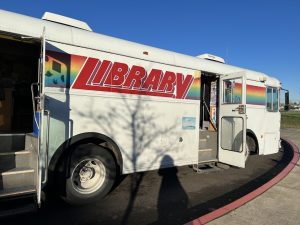This week’s readings gave me a lot of creative ideas about ways that libraries can support their communities in ways other than providing books and written materials. The concepts that stuck out the most to me were related to food access and food literacy in library settings.
I’ve written before about the concepts of food pantries in libraries, and now my eyes have been opened to even more possibilities. Ewen’s article about mobile kitchens was especially interesting to me because it combines the mobility of a bookmobile with the food access support of a food pantry. I also appreciate that the mobile kitchen incorporates education and food access into one program. I’m a big supporter of libraries helping people to develop skills, especially those that can be utilized for employment or bettering quality of life, and cooking skills are a great example of this. Kitchen skills have potential to be make or break for someone that’s looking for a job, and I say this as someone with extensive food service experience. Often times, a critical portion of interviews for kitchen staff positions is demonstrating knife skills, food safety knowledge, and other parts of safely and responsibly working in a kitchen environment. Resources like a mobile kitchen could drastically improve someone’s chances of employment.
Additionally, Ewen highlights the significance of providing food directly to people that need it via a mobile kitchen. A food pantry is a great resource that shouldn’t be taken for granted, however the mobile kitchen provides even more food access in the same way that libraries are a great resource but bookmobiles only increase their reach. This increase in geographical reach is especially impactful when thinking about food access in the setting of food deserts, something Ewen points out in her article as well.
As we move into the future and experience new barriers and limitations to our community support resources, we can all benefit from thinking creatively about new ways we can make our resources stretch. I’m now thinking about other ways that bookmobiles and mobile kitchens can broaden access to resources across a community. It’ll be exciting to move into the future and see more types of resources that become mobile, potentially including things like mechanical/construction tools or instruments, but I’m going to keep an open mind and stay curious to other ideas as well.
